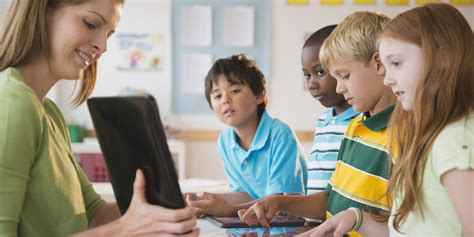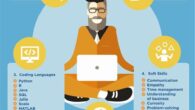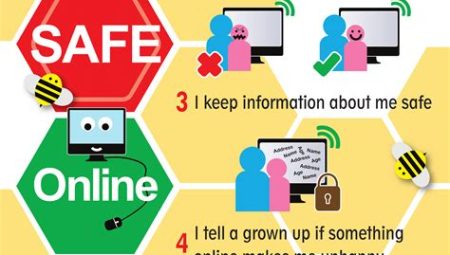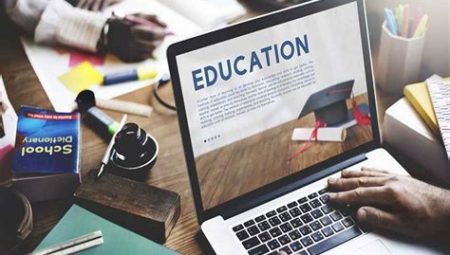In today’s ever-evolving digital landscape, the use of educational technologies is revolutionizing the way students learn and teachers instruct. From personalized learning to virtual and augmented reality, these innovative tools are reshaping the education experience and preparing students for a future driven by technology. In this blog post, we will explore the impact of educational technologies on learning, how these tools enhance student engagement, and the role they play in tailoring education to individual needs. We will also address the challenges of digital literacy and highlight the potential of artificial intelligence in shaping the next generation of education. Additionally, we’ll delve into the rise of online learning platforms and how they are promoting collaboration and communication among students. Join us as we delve into the exciting world of next-generation education and the potential it holds for empowering both students and teachers alike.
Table of Contents
The Impact of Educational Technologies on Learning
Educational technologies have revolutionized the way we learn and teach, bringing about a significant impact on the educational landscape. With the advent of digital tools and resources, students now have access to a wealth of information at their fingertips, making the learning process more interactive and engaging.
Furthermore, technology has enabled personalized learning experiences, allowing educators to tailor their instruction to meet the individual needs and learning styles of each student. This has led to improved student engagement and academic performance, as well as a more inclusive approach to education.
Additionally, the integration of educational technologies has paved the way for collaborative and interactive learning environments, where students can work together on projects, share ideas, and communicate with their peers and instructors in real time. This has fostered a sense of community and teamwork among students, enhancing their critical thinking and problem-solving skills.
In conclusion, the impact of educational technologies on learning has been profound, transforming the way education is delivered and received. As we continue to embrace digital innovations in the classroom, it is crucial to harness the full potential of these tools to empower students and educators alike, and to ensure that the benefits of technology are realized across all levels of education.
Enhancing Student Engagement through Technological Tools
Technology has become an integral part of modern education, offering new and innovative ways to engage students in the learning process. By integrating technological tools into the classroom, educators can create more interactive and personalized learning experiences that cater to the diverse needs of students.
One of the key benefits of using technological tools in education is the ability to enhance student engagement. Interactive whiteboards, tablets, and educational apps can make learning more interactive and hands-on, allowing students to actively participate in the learning process.
Furthermore, technology can provide students with personalized learning experiences, catering to their individual learning styles and abilities. This not only enhances engagement but also helps students to take ownership of their learning and become more motivated and self-directed learners.
In addition, technological tools can also enable collaboration and communication among students, fostering a more interactive and inclusive learning environment. By using tools such as online discussion forums, video conferencing, and collaborative software, students can work together on projects and engage in meaningful discussions, further enhancing their learning experience.
Personalized Learning: Tailoring Education with Technology
Personalized learning is a teaching method that tailors education to each student’s individual needs, interests, and strengths. This approach allows students to have more control over their own learning by allowing them to work at their own pace and focus on areas where they need the most help. Personalized learning also takes into account a student’s learning style, preferences, and goals, providing a more tailored and effective learning experience.
Technology has played a significant role in enabling personalized learning in the classroom. With the use of educational technologies such as adaptive learning software, personalized learning platforms, and digital content, teachers can create individualized learning paths for each student. These tools can provide real-time feedback, track progress, and offer targeted resources to help students achieve their learning objectives.
By leveraging technology, educators can also gather and analyze data on student performance and engagement, allowing them to make informed decisions to better support each student’s learning journey. This data-driven approach to teaching enables teachers to identify areas for improvement and provide the necessary support to help students succeed.
Overall, personalized learning with technology has the potential to revolutionize the way students learn and engage with educational content. By tailoring education to the individual needs of each student and providing a more flexible and adaptive learning experience, technology is not only enhancing the quality of education but also empowering students to take charge of their own learning.
Preparing Students for a Digital Future
In today’s fast-paced and ever-changing world, it is crucial for educators to focus on preparing students for a digital future. The advancement of technology has transformed the way we live, work, and communicate, and it is essential that the education system adapts to these changes as well.
By integrating educational technologies into the classroom, students can develop the skills they need to thrive in a digital future. This includes not only technical skills, but also critical thinking, problem-solving, creativity, and collaboration.
Furthermore, personalized learning through technology allows students to tailor their education to their individual needs and interests. This approach can help students stay engaged and motivated, ultimately leading to better outcomes.
As we continue to move towards a more digital future, it is important for educators to stay informed about the latest technological advancements and to empower students with the knowledge and skills they need to succeed in this ever-evolving landscape.
The Role of Virtual and Augmented Reality in Education
Virtual and Augmented Reality (VR/AR) have increasingly made their way into the education sector, offering innovative and immersive experiences for students. These technologies have the potential to revolutionize the way students learn and comprehend complex concepts.
By incorporating VR/AR into the classroom, educators can create interactive and engaging learning environments that stimulate students’ curiosity and help them visualize abstract ideas. For example, students studying history can virtually visit historical landmarks and events, gaining a deeper understanding of the subject matter.
Furthermore, VR/AR can cater to different learning styles, making education more inclusive and accessible. Visual and kinesthetic learners can benefit from hands-on experiences and 3D simulations, while auditory learners can engage with interactive auditory elements incorporated into the virtual environment.
Overall, the role of VR/AR in education is to enhance learning experiences, promote active participation, and prepare students for the technologically advanced world they will be entering.
Empowering Teachers through Technology Integration
Empowering teachers through technology integration is essential in today’s rapidly evolving educational landscape. By equipping educators with the necessary technological tools and resources, they can create more dynamic and engaging learning experiences for their students.
Through technology integration, teachers can personalize instruction, provide real-time feedback, and facilitate collaboration among students. This fosters a more student-centered approach to learning, allowing for greater flexibility and customization based on individual student needs and learning styles.
Furthermore, technology integration empowers teachers to access a wealth of educational resources and professional development opportunities. With online learning platforms, virtual and augmented reality tools, and AI-powered resources, educators can enhance their own knowledge and skills to better meet the needs of their students.
By embracing technology integration, teachers can also stay ahead of the curve and prepare students for a digital future. They can instill essential digital literacy skills, foster critical thinking and problem-solving abilities, and expose students to a wide range of technological tools and resources that will be invaluable in their future careers.
Utilizing Artificial Intelligence in Next-Generation Education
In today’s rapidly advancing world, the integration of Artificial Intelligence (AI) in education is becoming increasingly prevalent. AI has the potential to revolutionize the way students learn and succeed in the classroom. By incorporating AI tools and technologies into the learning environment, educators can personalize and adapt the curriculum to meet the specific needs of each student. This not only enhances the quality of education but also ensures that students are engaged and motivated to learn.
With the help of AI, teachers can analyze student data, identify learning patterns, and provide targeted support to struggling learners. This level of personalization in education ensures that no student is left behind and that each student can reach their full potential. Additionally, AI-powered educational systems can provide real-time feedback, allowing students to track their progress and take control of their learning journey.
Furthermore, AI can assist educators in creating adaptive learning environments that cater to different learning styles and abilities. By utilizing AI-powered tutoring systems, students can receive personalized support and guidance, ultimately leading to improved learning outcomes. AI can also help in automating administrative tasks, freeing up teachers’ time to focus on more meaningful interactions with their students.
As we look towards the future of education, it is clear that AI will play a crucial role in shaping the next generation of learners. By harnessing the power of AI, educators can create a more inclusive, personalized, and effective learning experience for students, ultimately preparing them for success in a rapidly evolving digital world.
The Rise of Online Learning Platforms
The rise of online learning platforms has been a game changer in the field of education. With the rapid advancements in technology, traditional classroom-based learning is no longer the only option for students. Online learning platforms have provided access to education for individuals who may not have been able to pursue traditional methods of learning due to various constraints, such as geographic location or time restraints.
Online learning platforms have revolutionized the way we learn, offering a plethora of courses and programs that cater to a wide range of interests and skills. Whether it’s learning a new language, acquiring technical skills, or obtaining a degree, online platforms have made education more accessible and convenient for learners of all ages.
Moreover, the flexibility offered by online learning platforms allows students to learn at their own pace, making it easier for working professionals or individuals with busy schedules to pursue further education without compromising their existing commitments. This flexibility has opened up a world of opportunities for those who were previously unable to engage in traditional forms of education.
In addition, online learning platforms have also provided a platform for individuals to learn from experts and professionals from around the globe. This global perspective enriches the learning experience and provides unique insights that may not have been accessible in a traditional classroom setting. The rise of online learning platforms has truly revolutionized the way we learn and has paved the way for a more inclusive and diverse educational landscape.
Addressing the Challenges of Digital Literacy
Digital literacy is becoming increasingly important in today’s technology-driven world. As we rely more and more on digital tools for communication, work, and education, it is essential that individuals have the skills and knowledge to navigate the digital landscape effectively.
One of the challenges of digital literacy is the rapid pace at which technology evolves. New tools and platforms are constantly being developed, and individuals must continuously update their skills to keep up with these changes. This can be overwhelming, especially for those who are not naturally tech-savvy.
Another challenge is the digital divide, which refers to the gap between those who have access to technology and the internet, and those who do not. This gap can limit individuals’ opportunities for education and employment, making it essential to address issues of access and equity.
Furthermore, misinformation and digital security are also key challenges in the digital literacy landscape. With the abundance of information available online, it is crucial for individuals to have the skills to evaluate sources critically and discern fact from fiction. Additionally, understanding how to protect personal information and navigate the online world safely is a fundamental aspect of digital literacy.
Promoting Collaboration and Communication with Educational Technologies
In today’s rapidly evolving educational landscape, the use of educational technologies has undergone a significant transformation. One of the key benefits of leveraging these tools is the ability to promote collaboration and communication among students and educators alike.
By integrating platforms such as virtual classrooms, online discussion forums, and collaborative project management tools, collaborative learning becomes a reality. Students are able to work together on assignments, share ideas, and provide feedback in real-time, regardless of their physical location.
Furthermore, communication is enhanced through the use of technologies such as video conferencing, instant messaging, and collaborative document editing. These tools enable students to engage in meaningful discussions, seek help from their peers, and connect with their instructors outside of traditional classroom hours.
Overall, the seamless integration of educational technologies not only fosters a sense of community within the learning environment but also hones essential communication skills that are invaluable in the digital age.






